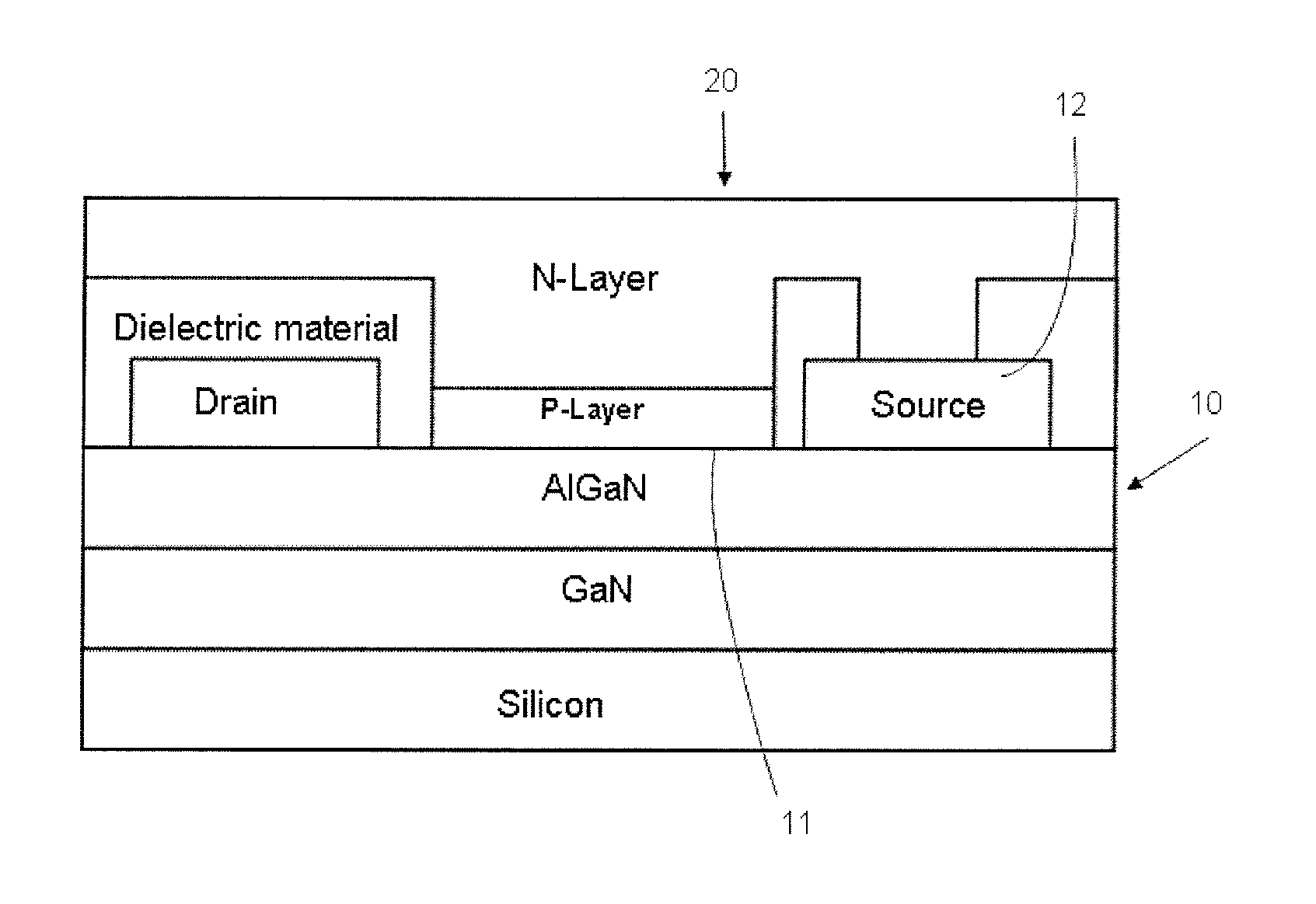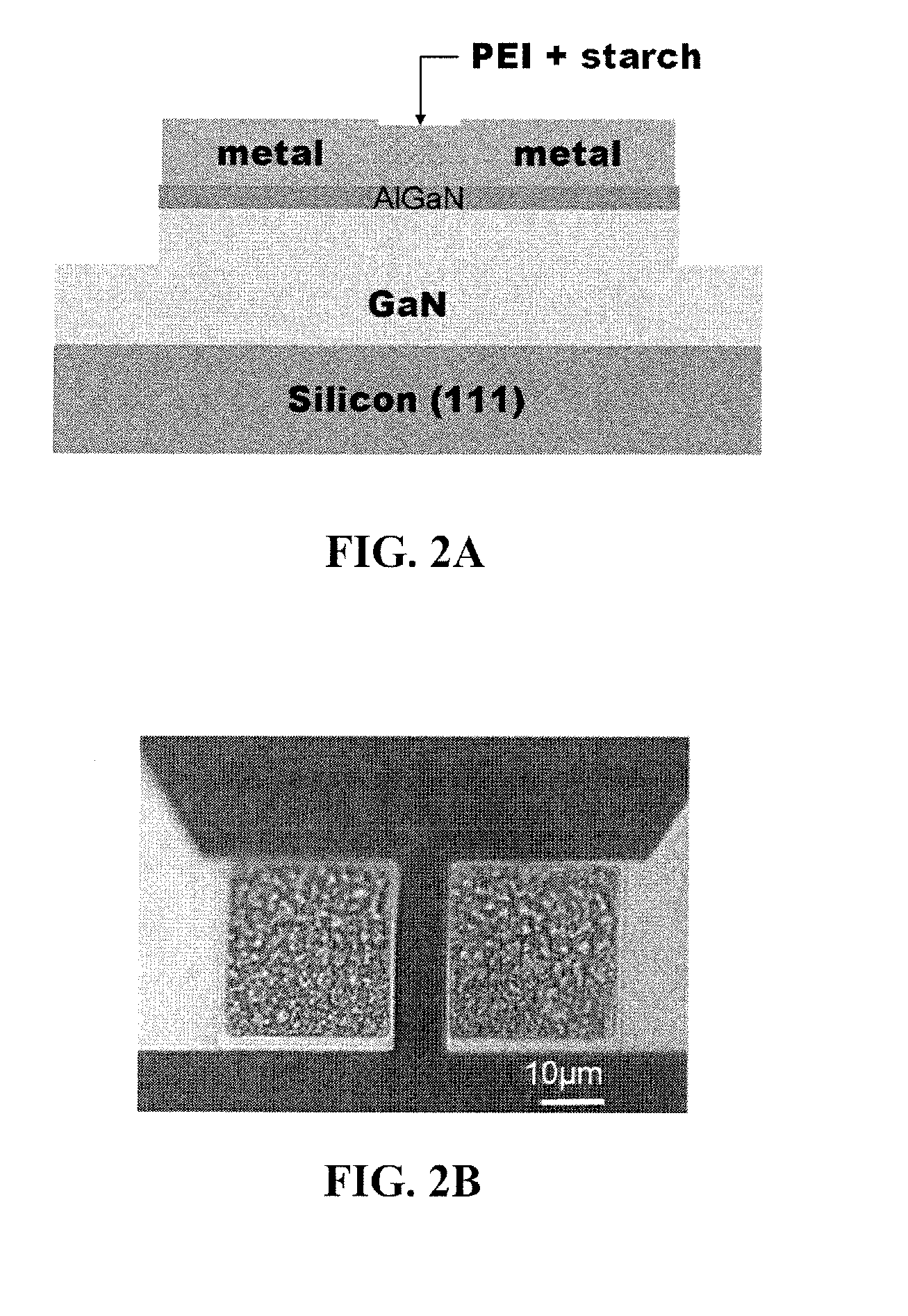Oxygen and carbon dioxide sensing
a carbon dioxide and sensing technology, applied in the field of detection of carbon dioxide (co2) gas, can solve the problems of limited ndir technology, expensive and bulky instruments, and inability to detect carbon dioxide,
- Summary
- Abstract
- Description
- Claims
- Application Information
AI Technical Summary
Benefits of technology
Problems solved by technology
Method used
Image
Examples
embodiment 1
2. The carbon dioxide sensor , wherein the selective recognition layer comprises a polymer containing amino groups. The selective recognition layer can be, for example, PEI / starch, APDMS, PSEDA, PAPPS, or PPI.
3. An oxygen sensor, comprising: a high electron mobility transistor (HEMT) comprising a selective recognition layer on a gate region, wherein the selective recognition layer has a high oxygen vacancy concentration. The selective recognition layer can be, for example, a zinc oxide, indium-zinc-oxide, or indium-gallium-zinc-oxide, or a tin-oxide or titanium-oxide.
4. A sensor, comprising: a high electron mobility transistor (HEMT); and a polymer based solar cell connected to the HEMT.
embodiment 4
5. The sensor , wherein an N-type region of the polymer based solar cell is connected to a source region of the HEMT.
6. The sensor according to embodiment 4 or 5, wherein the polymer based solar cell can be provided on a gate region of the HEMT.
7. The sensor according to embodiment 4, wherein the sensor is used in an IR detection system to measure CO2 and / or oxygen.
8. A method of detecting oxygen and carbon dioxide in exhaled breath, comprising: providing a sensor device in or near exhaled breath of a patient, wherein the sensor device comprises:a first high electron mobility transistor (HEMT) on a substrate and comprising a layer of PEI / starch, APDMS, PSEDA, PAPPS, or PPI on a gate region of the first HEMT; anda second HEMT on the substrate and comprising zinc-oxide, indium-zinc-oxide, indium-gallium-zinc-oxide, tin-oxide, or titanium oxide on a gate region of the second HEMT.
embodiment 8
9. The method , further comprising: recycling the second HEMT by performing an annealing process; and performing a second test of the oxygen and carbon dioxide in the exhaled breath.
10. A method of detecting oxygen and carbon dioxide in exhaled breath, comprising: providing an infrared (IR) detection system in or near a path of exhaled breath of a patient, wherein the IR detection system comprises:a polymer based solar cell on a gate region of a HEMT, wherein the polymer based solar cell converts incident light into electric signals and the HEMT amplifies the electrical signals.
11. A method of detecting oxygen and carbon dioxide in exhaled breath, comprising: providing an infrared (IR) detection system in or near a path of exhaled breath of a patient, wherein the IR detection system comprises:a high electron mobility transistor (HEMT); and a polymer based solar cell connected to the HEMT, wherein the polymer based solar cell converts incident light into electric signals and the HEMT...
PUM
| Property | Measurement | Unit |
|---|---|---|
| temperatures | aaaaa | aaaaa |
| drain bias voltage | aaaaa | aaaaa |
| thick | aaaaa | aaaaa |
Abstract
Description
Claims
Application Information
 Login to View More
Login to View More - R&D
- Intellectual Property
- Life Sciences
- Materials
- Tech Scout
- Unparalleled Data Quality
- Higher Quality Content
- 60% Fewer Hallucinations
Browse by: Latest US Patents, China's latest patents, Technical Efficacy Thesaurus, Application Domain, Technology Topic, Popular Technical Reports.
© 2025 PatSnap. All rights reserved.Legal|Privacy policy|Modern Slavery Act Transparency Statement|Sitemap|About US| Contact US: help@patsnap.com



